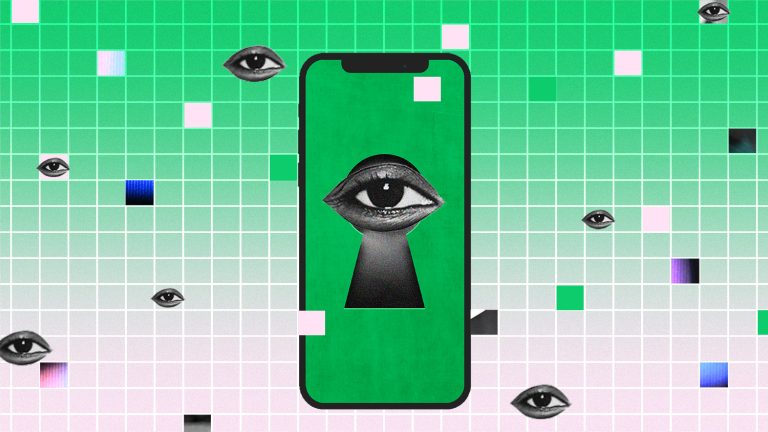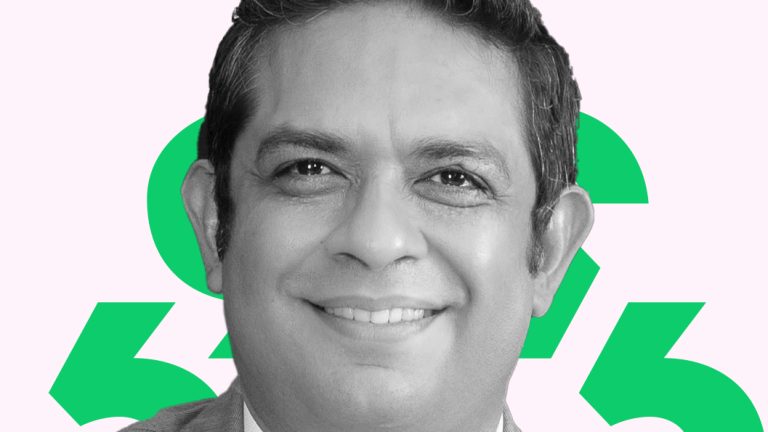Steve Papa isn’t a well-known name outside niche telecomms circles. An Ivy League-educated tech entrepreneur, he has had an eclectic career, developing software, working in philanthropy, and was an early investor in US food delivery app, Toast. His current position, as the CEO of telecomms vendor Parallel Wireless, has thrust him into a more high-profile role, as he positions himself, and his company, in the geopolitical tussle between China and the U.S.
Over the past few years, New Hampshire–based Parallel Wireless has been deepening its reach into Africa and elsewhere, pitching itself to mobile operators as a low-cost route to deploy wireless broadband technology. It’s signed 18 contracts so far, including one announced in June with MTN Group, Africa’s biggest mobile network.
The rollout of mobile broadband, particularly 5G, in global markets has become increasingly political, as the U.S. government tries to rein in the global leader, Shenzhen-based Huawei, a Chinese national champion. Over the past few years, particularly during the Trump administration, the U.S. has blacklisted major Chinese telecomms companies and lobbied its allied countries to do the same. The conflict has forced mobile operators to consider not just the financial costs but also the political implications of choosing a 5G equipment provider.
While some companies have been cautious about too visibly taking sides, Papa has never hidden his partisanship. In May 2020, in an interview with RCR Wireless News, an industry publication, he warned of China’s national economic strategy to dominate communications technologies and accused them of “having distorted” international markets. “We can let that happen, or we can counter it in a similar way,” he said. Papa has been consistent on this theme and warned of the consequence of coming second in the “5G race,” in a piece he wrote in March 2020. “The loser,” he said, “will beg for access.”
Steve Papa declined to speak directly to Rest of World for this story, but, in response to questions, Parallel Wireless spokespeople reiterated his key talking points over the past couple of years.
Parallel’s approach is based on a fledgling open-source technology called Open RAN, which promises to allow telecomms operators to use different vendors for different pieces of their 4G and 5G networks, lowering their costs and freeing them from the lock-in agreements that they have often had to sign with big infrastructure providers like Huawei, Ericsson, and Nokia.
But even though it sells itself on the basis that it can decouple telecomms from their suppliers, Parallel’s deep connections with the U.S. government makes it a controversial choice for some international partners. In the 2010s, it was first backed by In-Q-Tel, the venture capital arm of the United States’ global spy agency, the Central Intelligence Agency (CIA). Now, along with a consortium of other U.S. companies including Mavenir and Altiostar, Parallel Wireless is accelerating the adoption of Open RAN across the world by offering telecomms companies, particularly those in cost-conscious emerging and developing markets, a low-cost alternative to building their 5G networks. But mobile operators in Africa are cautious of not just the nascent nature of the technology, they are trying to avoid getting drawn into a geopolitical battle.
“What is happening and what the U.S. is pushing is a sort of bifurcation, splitting the global internet [and telecomms market] into two: one that is U.S. dominated and another that is China dominated,” said W. Gyude Moore, a former Liberian minister for public works and now a senior policy fellow at the Center for Global Development (CGD).
Since 2018, MTN has been carrying out 5G demos across the continent, showcasing the superfast speeds and possibilities of fifth-generation networks for enabling driverless cars, robotics, and home automation. But the use case for the technology can seem a little remote in many developing countries, and industry insiders believe existing technologies are capable of supporting many of 5G’s current use cases. MTN’s last CEO, Rob Shuter, told Reuters on the sidelines of a telecomms conference in Durban in 2018, “It would not be a technology for everybody because most people don’t need it, your phone works fine on just 3G.”
Meanwhile, just over a third of telecomms subscribers in Sub-Saharan Africa have access to 4G broadband, the lowest of any region. And cost considerations and consumer demand continue to dictate how and where mobile operators deploy their 4G networks. Any 5G expansion on the continent would face similar considerations. The GSMA, the mobile telecommunications industry trade body, has estimated that by 2025, only 3% of the continent’s mobile connections will be 5G.

But if the global 5G rollout is a race, Huawei has built a sizable lead in Africa. Huawei took over from Ericsson as the leader in Africa roughly eight years ago, said Olusola Teniola, the previous president of the Association of Telecommunications Companies of Nigeria (ATCON). The Chinese national champion is present in 20 African countries. Its technology is reportedly around 30–50% cheaper, and, for telecomms in Africa, where the average revenue per user is the lowest in the world, that’s an attractive prospect. Huawei has also simply invested more time building relationships with African companies. As Stephane Richard, CEO of French telecomms giant Orange, the second-largest operator on the continent, told Reuters in June, “We’re working more and more with Chinese vendors in Africa, not because we like China, but we have an excellent business relationship with Huawei.”
The U.S. government argues that Chinese tech companies present a security risk if countries build them into critical infrastructure, since it claims Beijing will be able to insist that Huawei, ZTE, or others give them backdoor access to networks.
“The US government has been clear that they have concerns about Chinese companies [such as Huawei and ZTE] and some of the ways that it can undercut the security of these communication systems,” said Judd Devermont, the Africa director of the Washington, D.C.–based Center for Strategic and International Studies (CSIS).
Those concerns have resonated in some countries — the U.K. and Australia have limited or entirely banned the use of Huawei technology in their networks.
Yet, as African telecomms expand their existing 3G and 4G networks, they’re having to consider future-proofing this legacy infrastructure in a way that best prepares them for any migration to 5G in the long term. However, the geopolitical tension between the U.S. and China is creating an urgency for operators; they need to decide which partner will build their broadband infrastructure without exposing them to future uncertainties, both politically and technologically, say industry watchers.
The urgency stems from the reality that Africa doesn’t produce significant R&D or telecomms equipment, Teniola explained. “The best advice [for operators] is there shouldn’t be a single supplier risk,” he said, sharing that more companies are increasingly working with multiple vendors to reduce exposure to any one Chinese operator.
Unlike in Europe and the U.S., African governments have not banned operators from using Huawei equipment. In Nigeria, for example, “Vendors have been left to decide what they feel is appropriate in terms of their reliance on vendors from a particular country,” Teniola said. On the flip side, some governments are also looking to support domestic operators on their choice of vendor.
In 2020, when Safaricom, East Africa’s biggest telecomms operator, announced it would deploy 5G using Huawei technology, the company faced significant pressure from the U.S. government. After delays, it finally started trials in March 2021, in partnership with both Huawei and its Finnish rival, Nokia. It navigated strenuous U.S. pushbacks, thanks in no small part to support from the Kenyan government.
“As a government, we are aware of the questions about suppliers and technology,” Kenya’s ICT minister, Joe Mucheru, said at Safaricom’s 5G launch. “[B]ut some of them are more about politics than technology.”
As noted earlier, Safaricom’s multivendor route is increasingly seen by African telecomms executives as the optimum approach. “Africa is not the U.S.,” said Eric Olander, co-founder of the China Africa Project. African telecomms companies use pragmatic business approaches and would rather keep their options open, both from a business point of view and a political standpoint, Olander added.
The “race” between vendors can feel like an all-or-nothing decision because there is typically no interoperability between different vendors’ radio access network (RAN) equipment — the framework that wirelessly connects a phone to the antennae on cell towers and base stations before transmitting to a mobile operator’s core network.
In theory, this is an issue that the Open RAN technology should be able to resolve, by allowing companies to pick and choose different pieces of infrastructure, including software, and preventing them from becoming dependent on one supplier. “[In the future], there would be other ways to deploy cheaper RANs, but, at the moment, the one that is leading in terms of its acceptability for commercialization is the Open RAN,” Teniola said.
Telecomms aren’t necessarily convinced by the technology — even MTN, which has said it would partner with five Open RAN companies, has also said that “widespread adoption [of Open RAN] is likely years away.”
Another major sticking point is that Open RAN is now closely linked to U.S. interests. “We started investing in 5G seven years ago at In-Q-Tel because we felt that it was going to be a national security interest,” Christopher Darby, CEO of the CIA’s venture capital arm, told a U.S. congressional committee in February 2020. He explained that US companies like Cisco and phone manufacturers already compete favorably against Chinese companies in the core telecomms network and mobile devices. “What we are lacking is the radio access network,” Darby said. But companies like Steve Papa’s Parallel Wireless, an In-Q-Tel portfolio company, “are trying to change the game … and the cost basis,” he added.
True to this mandate, Parallel Wireless has doubled down on developing markets like Africa by supporting in-demand but older broadband, namely 2G, 3G but also including 4G.
But even as Parallel Wireless and Open RAN are gaining market share, network operators are still cautious. Operators are increasingly more conscious of the security risks when they acquire cheaper equipment from vendors. “Companies are reconsidering whether the ability to get the cheapest level in terms of pricing justifies the cybersecurity risks that they might be exposed to,” Teniola explained, more so because “5G enables applications and scenarios that were not contemplated in the earlier generations of GSM.”
And as U.S. Open RAN vendors like Parallel Wireless freely advance their ties to the U.S. government, it mirrors the same relationship they condemn with Huawei and China. But worse, it leaves global telecomms companies with a dilemma. In Africa’s case, mobile operators are trying to find a sweet spot between market realities, geopolitical constraints, and, when possible, climate change, as they navigate a now thorny global telecomms industry, Devermont said.



